Spooky Hawaii – Hawaiian Urban Legends Not To Be Ignored
Source :http://en.wikipedia.org/wiki/Folklore_in_Hawaii
The Half-Faced Ghost of Old Pali Road, O’ahu
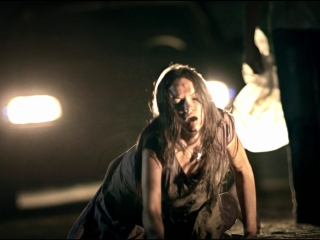
The Old Pali Road in Kailua is haunted. And not by just any old ghost. The road is home to a grotesque, half-faced phantom. The spectre is said to be the wandering soul of a teenaged girl who was raped and killed, and whose body was left to decompose in the bushes along the desolate road. She was strangled using her most beloved toy–the jump rope she brought with her wherever she went.
Visitors to the Old Pali Road report seeing the floating apparition of a young girl with long black hair, solemnly skipping rope as she floats down street. While this image is disturbing enough in and of itself, those who manage to look at the ghost’s face are truly in for a shock. According to eyewitnesses, her cheeks, nose, and mouth are completely non-existent. Yet her eyes remain not only intact, but wildly bulge out of their sockets. Her eyes are said to protrude this way because this is the how she appeared while being strangled in her last few terrifying moments on earth.
While this theory about the poor doomed girl’s ghost may explain the condition of her eyes, it does not say why is her lower face is gone. The reason for that, as the story goes, is that the before the girl’s body was discovered, scavenging animals had already found her and eaten away a portion of her face.
Now she is doomed to wander forever on the Old Pali Road
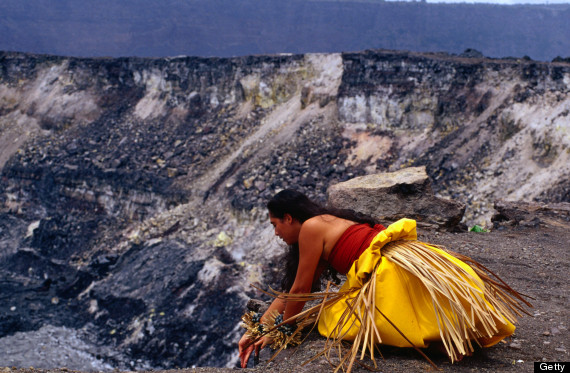
Story Of Pele And Pali Road
There are various stories pertaining to the rocky relationship between the Hawaiian lava goddess Pele and her hog-faced, demigod lover Kamapua’a, and one of them a spawned a bizarre urban legend by the Hawaiian people that boils down to one simple rule: Never carry pork over the Pali road.
As the story goes, Pele and Kamapua’a had a turbulent relationship that was doomed from the start. Kamapua’a was the product of an affair between his mother and his mother’s brother-in-law, and his stepfather named him Hog Face and treated him cruelly. Kamapua’a grew up handsome, smart, and powerful, but all he longed for was his stepfather’s acceptance. Kamapua’a’s heart became filled with anger and hate, and he decided to change his appearance by tattooing his face and wearing a boar’s face as a mask. He was then forced to flee his island due to the troubles he had intentionally caused on his stepfather’s land.
When Kamapua’a arrived in Hawaii, he heard of a gorgeous woman named Pele, so he traveled to the south of the island to ask for her hand in marriage. Pele was so disgusted by his appearance that she fought to keep him away from her. Eventually though, Pele yielded to his efforts and the two got married. Emboldened by her acceptance of him, Kamapua’a’s heart softened and his appearance changed back to his natural good looks. Unfortunately, Pele was so confused by Kamapua’a’s sudden transformation that she pulled away from him and retreated to her side of the island, which was hot and filled with lava. Kamapua’a was forced to live on the other side, where it was wet and lush. The two were forever separated.
In the modern-day urban legend, attempting to carry pork over the Pali Highway, which connects Windward Oahu to Honolulu, will anger Pele and cause your vehicle to break down until you discard the pork. In other versions of the story, an old woman or a white dog will appear, and you must offer the pork to them. The idea is that carrying pork from one side of the island to the other is symbolic of carrying part of Kamapua’a into Pele’s domain.
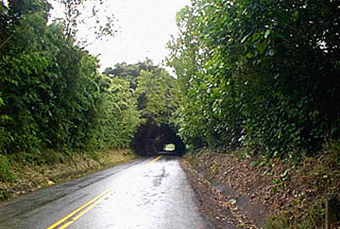
Pork over the Pali
Attempting to take pork over the Pali Highway is dangerous, as most island visitors learn. Despite repeated warnings that your car will break down or someone will get hurt in an accident, brave (and foolish) souls continue to challenge the gods – or in this case, the goddess, Pele, Hawai’i’s volcano deity.
In 1986, four Hickam airmen new to the islands decided to test the Pali with a pack of bacon. They drove out to the Pali Lookout at midnight and walked down the Old Pali Road. About 30 minutes later, they came across a gulch and began to climb up from the side. One of the men climbed up to about 150 ft. before he slid and got stuck on a muddy and slippery cliff. As he struggled to hold onto a couple of weeds and rocks, his friends made the frantic call for help to the Honolulu Fire Department. When the helicopter rescue crews arrived to help save the man, the pilot, Capt. Charles Thomas, noted that, a ti leaf plant (dubbed the “Hawaiian good luck plant” because it wards off evil spirits) kept the man from falling.
According to legend, the man slipped because he and his friends brought pork up to the lookout. Food, especially pork, attracts hungry and agitated spirits. Folklorist and author Martha Beckwith (Hawaiian Mythology) says tying a fresh green ti leaf, bamboo, or lele banana leaf around the food container protects one from angry spirits. This is known as placing a law upon the food.
According to Hawaiian legends, taking pork over the Pali is linked to the turbulent relationship between Pele, the goddess of fire, and Kamapua’a, a human demi-god half-man, half-pig. The two agreed not to visit each other, but taking pork over the Pali means taking a form of Kamapua’a from his domain (the wet side of the island) into Pele’s domain (the dry side of the island). Those who ignore Pele’s warnings risk her stopping the car from bringing Kamapua’a’s body over the Pali.
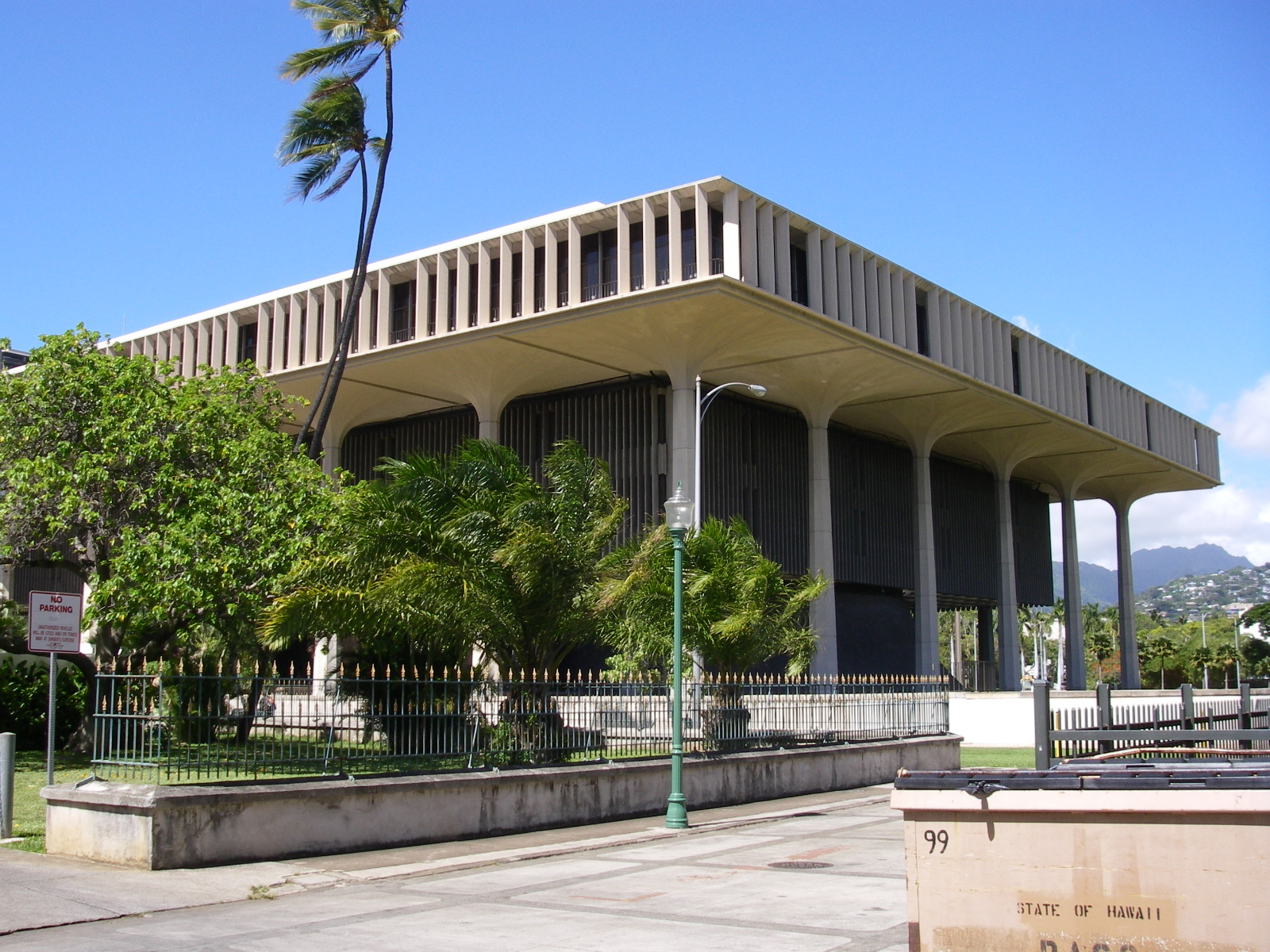
The State Capitol
Locals and island visitors alike have reported sightings of Queen Lili‘uokalani, the last monarch of the Hawaiian Islands (1891-1893), around the Capitol Building. One supernatural encounter with the queen was reported in March 1982. A legislative aide had worked into the wee morning hours. Around 2 a.m., she called her husband to pick her up. Having no babysitter, he brought their 10-year-old daughter. They waited for her in the basement parking lot where the daughter, playing with a ball, allegedly encountered a Hawaiian woman fitting the description of the queen: tall and beautiful with plumeria lei draped on each arm. The woman was barefoot, in a black dress with her hair up. By the time the little girl told her parents about the woman with whom she had played, the woman had mysteriously vanished. A few weeks later, when mother and daughter went to the State Capitol Building for the unveiling of the then new Queen Lili‘uokalani statue, the girl identified the queen as the woman she had played with in the Capitol basement.
Queen Lili’uokalani’s spirit is said to be accompanied by the strong smell of cigar smoke (the queen was indeed a smoker in her time). However, thick and heavy clouds of cigar smoke sometimes seen in the hallway of the basement of the State Capitol Building, a non smoking area, are also attributed to the presence of the late John Burns, Hawai‘i’s second governor, who used to take cigar breaks on the mauka-Waikiki corner of the fifth floor.
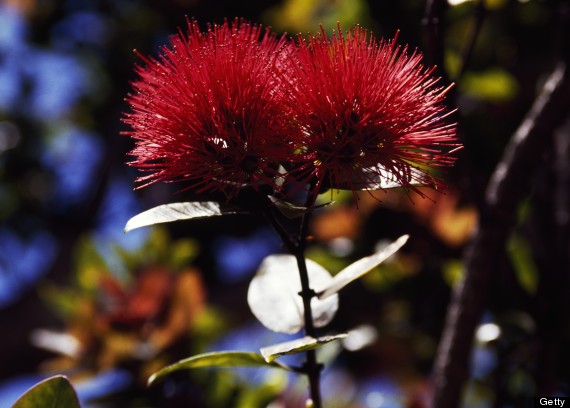
Don’t Pluck The Red Lehua Blossom
The Ohia tree is often the first plant to grow on new lava flows, but don’t even think of picking it’s beautiful, red Lehua blossom as a souvenir. Both the tree and flower are rooted in Hawaiian legend. Ohia and Lehua were young lovers: he was a handsome trickster and she was the most beautiful and gentle girl on the island. But, one day Pele came across Ohia and wanted him for herself. When he refused her, she turned him into a twisted, ugly tree. Pele ignored Lehua’s pleas to change him back, but the other gods felt sorry for the young girl. They couldn’t reverse Pele’s magic, but they did turn Lehua into a beautiful red flower and placed her on the tree so that the two young lovers would never again be apart. It is said that as long as the flowers remain on the tree, the weather is sunny and fair. But when a flower is plucked from the tree, rain falls like tears since Lehua still cannot bear to be separated from her beloved husband Ohia.
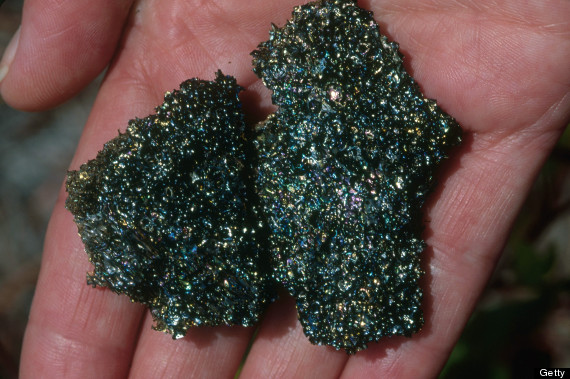
Don’t Take The Lava Rock Home With You
One of the most well-known myths in Hawaii is Pele’s Curse, which — it turns out — is not an ancient myth at all. Pele’s curse says that any visitor who takes rock or sand away from the Hawaii islands will suffer bad luck until the native Hawaiian elements are returned. The warning is ubiquitous in Hawaii, but it is a modern legend and some people attribute it to a disgruntled park ranger who was sick of people carting off rocks on his watch. Still others think tour guides made up the curse to discourage tourists from bringing dirt and sand onto the buses. Either way, each year hundreds of visitors send packages back to Hawaii full of rocks, sand, and other natural materials in an effort to relieve their consciences and change their luck.
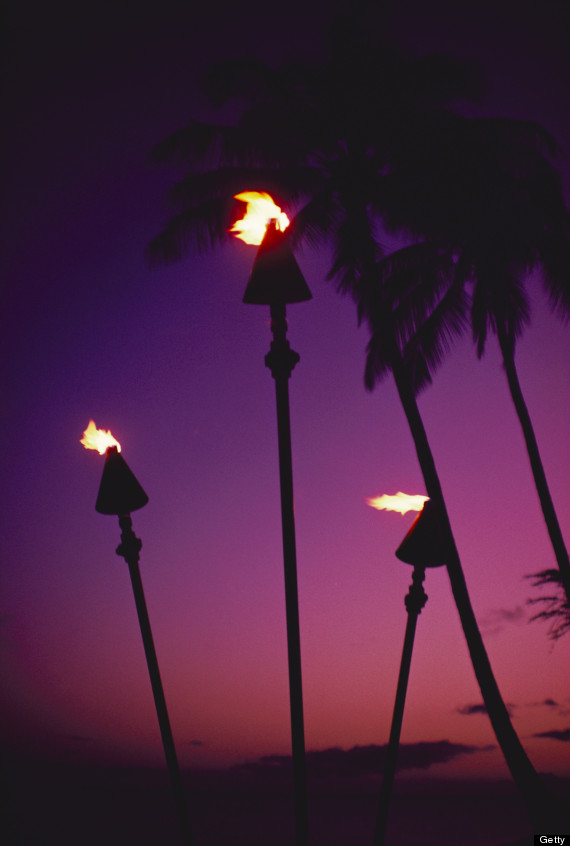
The Night Marchers
The Huaka’ipo are the spirits of ancient Hawaiian warriors who are eternally cursed to march throughout the islands of Hawaii. Known as the Night Marchers, they are said to march in a single line, often carrying torches and weapons, playing drums, and chanting. The Night Marchers rarely appear during the day, but when they do it means that they are escorting a living relative to the other side. The telling signs that Night Marchers are heading toward you are the sounds of drums getting closer, a foul odor, conch shells being blown, and approaching torchlight.
It is considered an evil omen to look at the Night Marchers, so to protect yourself you must lie facedown on the ground as a sign of respect. If they see you looking at them, the Night Marchers will kill you unless an ancestor recognizes you and claims you as their blood. Because no solid structure built on the Night Marchers’ path can deter them, many locals tell stories of the Night Marchers going through their homes and leaving fear in their hearts.
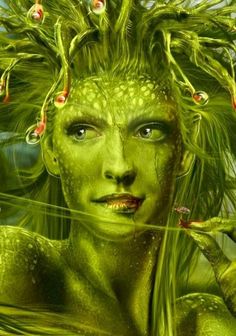
The Green Lady Of Wahiawa
In Japanese, obake is a term often used to describe a thing that changes. Much like the mujina, the obake is a shape-shifter in Japanese folklore. After being brought to Hawaii, the term obake became commonly used for supernatural entities of all kinds, though mostly ghosts or malevolent spirits.
One such spirit is described as a woman covered in moss and green mold who wanders the Wahiawa gulch. The locals call her the Green Lady. She is mostly seen near the Wahiawa Botanical Garden, but reports have surfaced that she can also be seen at the Wahiawa Elementary School. Those who have seen her near the elementary school describe her as a woman with green, fish-like scales, jagged teeth, and hair covered in seaweed.
The common backstory for the Green Lady is that there was once a woman who visited the Wahiawa gulch with her children. While there, one of her children got lost and was never found. The woman died of heartbreak and is said to still roam the Wahiawa area, looking for her lost child. It is also said that she will take any child she comes across.
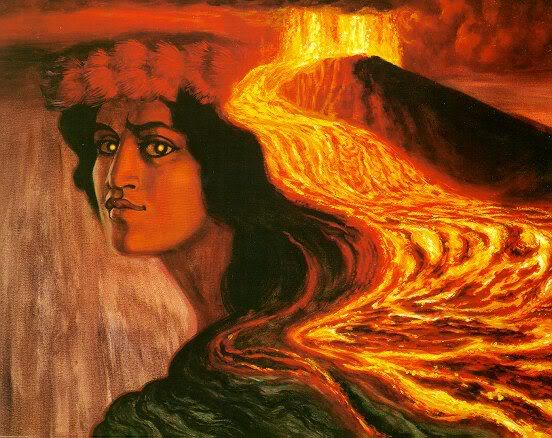
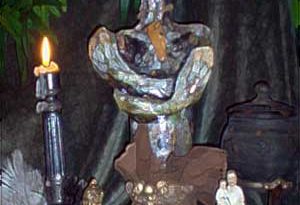

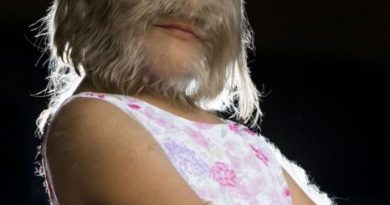
Pingback: 20.20 – MU Podcast | Mysterious Universe